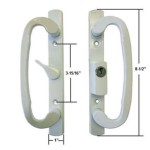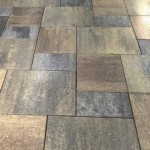```html
Concrete Patio Brick Pavers: A Comprehensive Guide
Concrete patio brick pavers represent a durable and aesthetically versatile option for creating outdoor living spaces. Their popularity stems from a combination of their affordability, ease of installation, and wide range of design possibilities. This article provides a comprehensive overview of concrete patio brick pavers, covering their advantages, disadvantages, installation process, maintenance requirements, and design considerations.
Advantages of Concrete Patio Brick Pavers
Concrete brick pavers offer numerous advantages that make them a compelling choice for patio construction. These advantages include durability, versatility, cost-effectiveness, and ease of maintenance.
Durability: Concrete pavers are manufactured from a dense mixture of cement, aggregate, and pigments. This composition results in a product that can withstand significant weight and pressure. Consequently, they are resistant to cracking, chipping, and spalling, especially compared to poured concrete. They are also highly resistant to freeze-thaw cycles, a crucial consideration in regions experiencing seasonal temperature variations. Due to their individual unit construction, pavers can shift slightly with ground movement, preventing large cracks from forming. Additionally, the interlocking nature of paver installations contributes to their overall stability and load-bearing capacity.
Versatility: Concrete pavers are available in a wide array of shapes, sizes, colors, and textures. This vast selection allows for the creation of unique and personalized patio designs. Pavers can mimic the appearance of natural stone, brick, or even wood, providing design flexibility without the associated cost or maintenance challenges. They can be arranged in various patterns, such as herringbone, basketweave, running bond, and circular patterns, further enhancing their aesthetic appeal. The ability to mix and match different paver styles and colors enables homeowners to create custom designs that complement their home's architecture and landscaping.
Cost-Effectiveness: While the initial cost of concrete pavers may be slightly higher than poured concrete in some instances, their long-term cost-effectiveness is often superior. Pavers require less maintenance and are easier to repair than poured concrete. If a section of pavers becomes damaged, individual units can be replaced without disrupting the entire patio surface. The longevity of concrete pavers also contributes to their cost-effectiveness. When properly installed and maintained, they can last for decades, providing a durable and attractive patio surface for years to come. Furthermore, the ease of installation can reduce labor costs, making them a financially attractive option for DIY enthusiasts.
Ease of Maintenance: Concrete brick pavers are relatively easy to maintain. Regular sweeping or blowing removes debris and prevents the buildup of dirt and grime. Occasional washing with a garden hose or pressure washer can further enhance their appearance. For more stubborn stains, specialized paver cleaners are available. The use of polymeric sand in the joints between pavers helps to prevent weed growth and stabilize the paver surface. Sealing the pavers can provide added protection against staining and fading, extending their lifespan and maintaining their aesthetic appeal. Sealing also helps to prevent water penetration, reducing the risk of damage from freeze-thaw cycles.
Disadvantages of Concrete Patio Brick Pavers
While concrete pavers offer numerous advantages, it is important to consider their potential drawbacks before making a decision. These disadvantages include installation complexity, potential for settling, and susceptibility to staining.
Installation Complexity: While often marketed as a DIY project, proper paver installation requires careful preparation and attention to detail. The base material must be properly compacted to ensure a stable and level surface. Incorrect base preparation can lead to settling and unevenness over time. Precise cutting and fitting of pavers around curves and edges can also be challenging. The installation of edging restraints is crucial to prevent the pavers from shifting and spreading. While experienced DIYers may be able to handle the installation process, it is often recommended to hire a professional contractor to ensure a successful and long-lasting result. Professional installers have the necessary equipment and expertise to properly prepare the base, install the pavers correctly, and ensure proper drainage.
Potential for Settling: Even with proper base preparation, concrete pavers can settle over time, especially in areas with unstable soil conditions. Settling can create uneven surfaces and tripping hazards. Regular inspection and maintenance are necessary to identify and address areas of settling. Correcting settling issues typically involves removing the affected pavers, adding more base material, and re-compacting the area before replacing the pavers. This can be a time-consuming and labor-intensive process. The use of geotextile fabric between the soil and the base material can help to improve drainage and reduce the risk of settling.
Susceptibility to Staining: While concrete pavers are generally durable, they can be susceptible to staining from oil, grease, and other substances. Prompt cleaning of spills is essential to prevent permanent staining. The use of a paver sealant can provide added protection against staining and make it easier to clean spills. However, sealants require periodic reapplication to maintain their effectiveness. Certain types of pavers, such as those with a rough or porous surface, may be more prone to staining than others. Choosing pavers with a smooth, dense surface can help to minimize the risk of staining.
Installation Process of Concrete Patio Brick Pavers
The installation of concrete patio brick pavers involves a series of steps that must be followed carefully to ensure a stable and long-lasting patio surface. The key steps include planning and layout, excavation and base preparation, paver installation, and joint filling.
Planning and Layout: The first step is to plan the patio's size, shape, and location. Consider the intended use of the patio, the surrounding landscape, and the style of the house. Mark the perimeter of the patio area using stakes and string. Ensure that the patio area slopes slightly away from the house to promote proper drainage. Create a detailed layout plan that shows the paver pattern, the location of any curves or edges, and the placement of any built-in features, such as seating areas or fire pits. Accurate planning is crucial to minimize waste and ensure a visually appealing result.
Excavation and Base Preparation: Excavate the area to a depth sufficient to accommodate the base material, the paver thickness, and a bedding layer of sand. The total depth will typically be between 8 and 12 inches, depending on the soil conditions and the expected load. Remove any topsoil, vegetation, and debris from the excavation area. Compact the subgrade using a plate compactor. Install edging restraints around the perimeter of the patio area to prevent the pavers from shifting. Add a layer of crushed aggregate base material, typically 4 to 8 inches thick. Compact the base material in layers using a plate compactor. Ensure that the base material is level and properly compacted to provide a stable foundation for the pavers. Add a bedding layer of sand, typically 1 inch thick. Level the sand using screed rails and a screed board. Do not compact the sand layer.
Paver Installation: Begin laying the pavers according to the planned pattern. Start at a straight edge or corner and work outward. Place the pavers tightly together, leaving a small gap between each paver for joint filling. Use a rubber mallet to gently tap the pavers into place, ensuring that they are level and flush with the surrounding pavers. Cut pavers as needed to fit around curves, edges, and obstacles. Use a paver cutter or wet saw to make clean and accurate cuts. Maintain consistent joint spacing throughout the patio area. Check the level of the pavers frequently using a level. Make adjustments as needed to ensure a level and uniform surface.
Joint Filling: Once all the pavers are installed, sweep polymeric sand into the joints between the pavers. Polymeric sand is a specialized type of sand that contains additives that help to bind the sand particles together, creating a stable and weed-resistant joint. Compact the polymeric sand using a plate compactor equipped with a rubber pad. Sweep away any excess sand from the paver surface. Lightly water the patio area to activate the polymeric sand. Follow the manufacturer's instructions for watering and curing the polymeric sand.
```
Should I Add A Concrete Or Brick Paver Patio Designer Landscapes

How To Cover A Concrete Patio With Pavers Diy Family Handyman

Concrete Patio Pavers Adelaide Budget

How To Install Patio Pavers Over An Existing Concrete Slab

Advantages And Disadvantages Of Both Patio Pavers Stamped Concrete

Concrete Pavers For Patios Driveways More Belgard

Tumbled Clay Pavers Patio Rustic

5 Benefits Of Installing A Brick Paver Patio Mutualmaterials Com

Should I Add A Concrete Or Brick Paver Patio Designer Landscapes

Paver Patio On A 45 Outdoor Living Pavers Design
Related Posts








